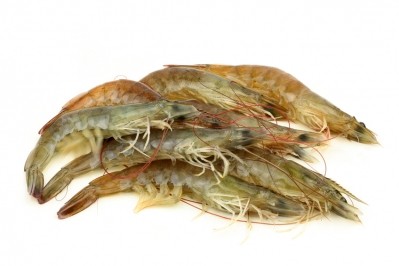Thailand: Feed wheat usage higher than expected due to import exemption for shrimp feed sector

The US agency, in its review, has revised upwards MY2016/17 wheat imports to around 3.8m metric tons (Mt) due to higher than expected feed wheat imports following the implementation of the domestic corn purchase requirements as part of Thailand’s feed wheat import regulations, enacted in January this year.
Part of this upward revision is due to feed wheat usage by shrimp feed manufacturers, who received an exemption in relation to the import rule, explained the USDA.
The new regulations require feed mills to purchase domestic corn prior to importing feed wheat, at a 3:1 domestic absorption rate of imported feed wheat/domestic corn. However, in June 2017, the Thai Ministry of Commerce agree to allow feed mills that produce shrimp feed an 110,000 metric ton exemption in relation to that rule, on the basis that those mills don’t typically use corn in their rations.
The move followed a request by the Thai Feed Mill Association in March 2017.
Other feed producers using imported feed wheat are still subject to the corn domestic absorption requirements. Thai feed mills, though, reportedly had large inventories of feed wheat during the first quarter of 2017, which they had imported prior to the implementation of the new import regulations.
The USDA said it expects total feed wheat imports in MY2016/17 to decline to approximately 2.5m metric tons, down 27% from MY2015/16. It predicts total wheat imports will decline further in MY2017/18 as it expects the Thai government to maintain the domestic corn purchase requirements given the fact current domestic corn prices are still below their target of 8 baht per kg (US$243/MT).
Corn production
The US agency forecasts that for MY2017/18 corn production in Thailand will hit 4.9m Mt. It said this is a 6% reduction from last year due to the Thai government’s seizure of corn planted in illegally deforested areas and unattractive corn prices. Corn plantings in illegally deforested areas are gradually declining due to stringent law enforcement by local officials, particularly in the northern region, which accounts for around 70% of total corn production.
The report also noted that large Thai feed mills are only purchasing corn grown on privately owned land due to concerns about the EU potentially banning livestock products raised on corn-based feed from deforested areas.
Feed rice trends
The USDA had revised downwards the Thai feed industry’s demand for broken rice to around 1.8m metric tons (Mt) in MY2016/17, compared to the previous forecast of 2.4m Mt.
The sale of feed-quality and deteriorated rice in Thailand has been suspended since June 30, 2017, by the order of the Administrative Court. The legal ruling was in response to a petition by an allegedly disqualified bidder who participated in two recent tenders for deteriorated rice and feed-quality rice.
“As the court process will take some time, the government is expected to be unable to sell these stocks this year.”
The USDA review noted the price of feed-quality and deteriorated rice from government stocks is 40-50% cheaper than the market price of new-crop broken rice, so rice purchases from non-government stocks by poultry feed producers, power plants, and fertilizer manufacturers is unlikely given that it would not be economically viable.















